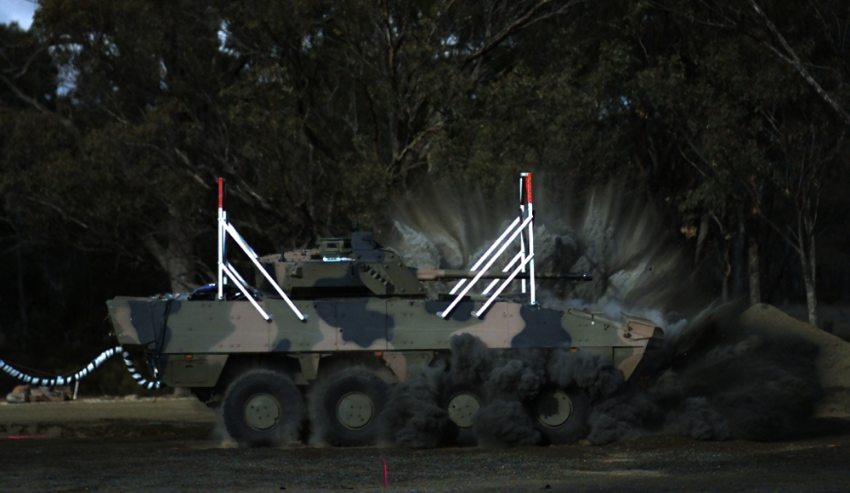The competition to secure the $5 billion LAND 400 Phase 2 contract has wrapped up, with the completion of a final series of blast tests on vehicles from the two shortlisted contenders.
To continue reading the rest of this article, please log in.
Create free account to get unlimited news articles and more!
BAE Systems Australia’s Patria AMV-35 and Rheinmetall’s Boxer CRV were exposed to simulated mine blasts at Defence’s Proof and Experimental Establishment at Graytown in Victoria to assess their survivability.
The blast tests were conducted under the wheels and under the belly of the vehicles, and represented a final trial by fire.
Minister for Defence Industry Christopher Pyne said the tests, which finished on schedule, will help decide on the best option for Australia's soldiers.
"The aim of this project is to deliver a world-class armoured fighting vehicle which can take a hit, and protect our soldiers," Minister Pyne said.
"Importantly, these trials have been conducted by Australian soldiers who will operate these vehicles when they are delivered, closely supported by Defence Science and Technology Group staff.
"During the last 12 months, the vehicles’ protection, lethality and usability have been measured and assessed."
Defence will buy 225 CRVs costing $4-5 billion, a project that Minister Pyne says will secure employment across Australia.
"The project secures the ADF’s sovereign CRV expertise and over 1,000 jobs across more than 300 Australian-based companies,” said Minister Pyne.
"The winner will be announced in the first half of 2018."
The test and evaluation program assessed the vehicles and their support systems across a wide range of criteria, with a particular focus on protection, lethality and mobility.
Three phases of user evaluations were conducted by Australian soldiers at Puckapunyal in Victoria and the Mount Bundey Training Area in the Northern Territory.
"The soldiers are representative of who will use the vehicles when they enter service in the early 2020s," said Minister Pyne.
The program saw the vehicles drive aboard a Landing Helicopter Dock so they could be tested with the ships on-board systems.
“The vehicles’ transportation compatibility was also tested using C-17 aircraft," said Minister Pyne.
Victoria and Queensland are in competition to secure the build site of the vehicles, with BAE Systems partnering with Victoria and Rheinmetall with Queensland.
If it is the successful tenderer, BAE Systems Australia will combine its Victorian maritime, aerospace and land businesses into a single defence hub at Fishermans Bend, which would become the biggest of its type in Australia and would be the site of manufacturing for the Army's Armed Combat Reconnaissance Vehicles.
If Rheinmetall are named as the successful tenderer, the company will establish its Australia and New Zealand headquarters, and a manufacturing and vehicle maintenance facility, in South-East Queensland.
Around 100 of the vehicles are expected to be located at the Townsville and Enoggera bases.
Video credit: Commonwealth of Australia, Department of Defence

 Login
Login







